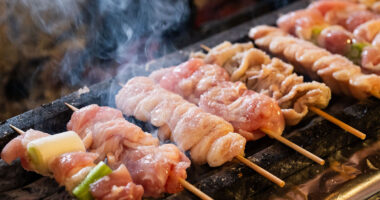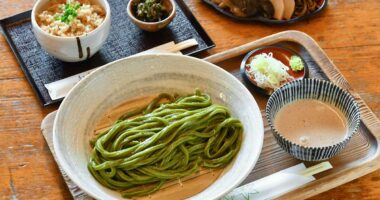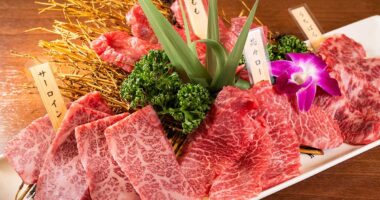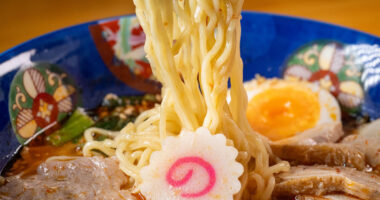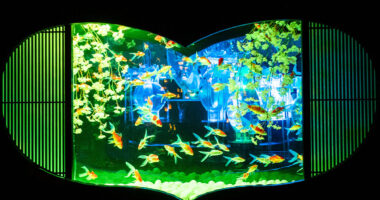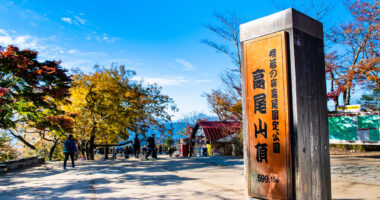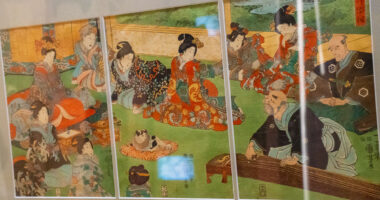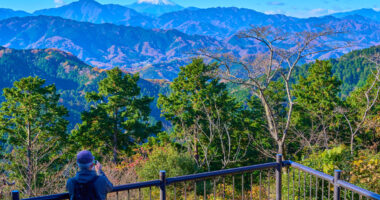Tokyo’s 銀座 Ginza and 新橋 Shimbashi districts, although located adjacently, represent two very different facets of Japan’s bustling capital city. Ginza, with its high-end shopping and sophisticated dining, offers a taste of Tokyo’s modern side, while still retaining its traditional roots through longstanding department stores. In contrast, the business and entertainment district of Shimbashi exudes a more down-to-earth atmosphere, featuring izakayas, bars, and a glimpse into the everyday life of Tokyo’s white-collar workers.

Ginza’s 中央通り Chūō-Dōri avenue flanked by the Seiko House Building and Mitsukoshi Department store.
Access
Ginza and Shimbashi are easily accessible via the Tokyo Metro Ginza Line, Marunouchi Line, and JR Yamanote Line. The nearest station is Ginza Station (G09, M16, H08), which is approximately 5 minutes from Tokyo Station. From Ginza Station, many of the area’s main attractions are within walking distance.
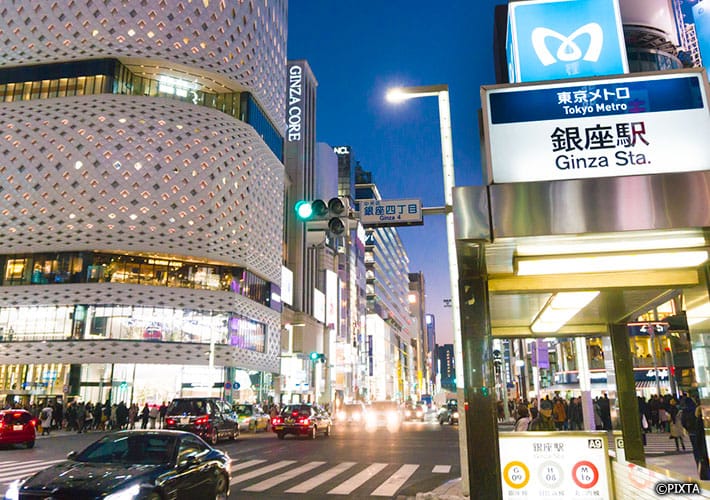
Ginza Station.
Shimbashi Station (G08, JR) is less than ten minutes away from Ginza Station on foot, and also approximately 5 minutes from Tokyo Station.
Food and Drink
Ginza
Sushi: Ginza is home to numerous high-end sushi restaurants, including some with Michelin stars and even a few legendary establishments with very long waiting lists. More reasonably priced restaurants are also available.
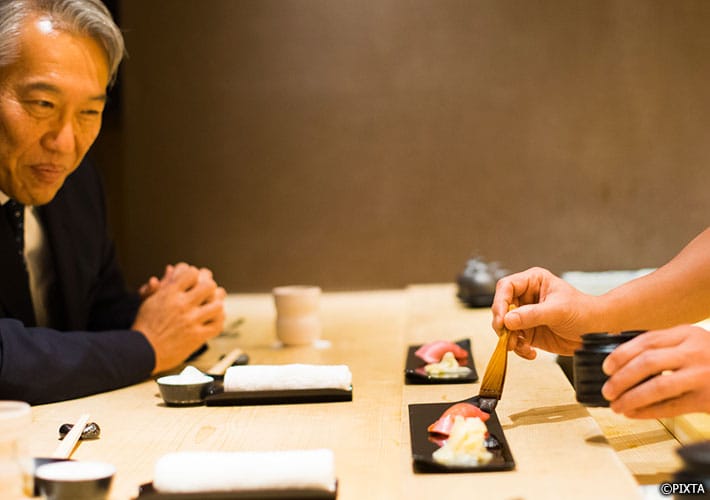
Mouthwatering sushi about to be served at a high-end sushi restaurant. [Photo for illustrative purposes only]
Wagashi (Japanese sweets): Ginza is home to a variety of traditional confectioneries offering an assortment of wagashi for every taste and preference. Western-inspired sweets like waffles, crepes and other baked goods are also available. On weekends, Chuo-Dori opens up to pedestrians, and if you’re lucky, you can find a table with a parasol to sit down and enjoy a sweet treat during the summer months.
Fruit parlors: Ginza is home to several luxurious fruit parlors, some of which trace their history to the Meiji Era. They offer a range of beautifully presented fruit-based desserts, such as parfaits, sundaes, and fresh fruit platters.
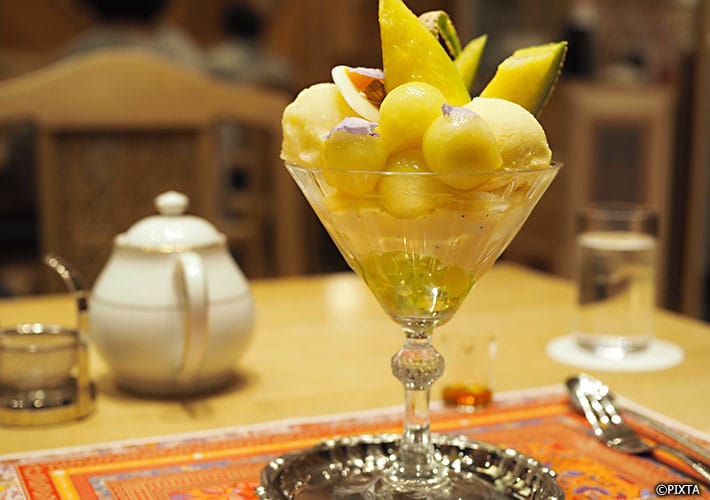
A mouthwatering fruit parfait. [Photo for illustrative purposes only]
International cuisine: The district is also renowned for its diverse array of international dining options, from French to Italian, ensuring that every palate is catered to.
Shimbashi
Restaurants Under The Tracks: A unique feature of Shimbashi is the collection of dining establishments located beneath the elevated train tracks, known as ガード下 gādo-shita offering an authentic experience in a lively, bustling atmosphere. The area is filled with a variety of reasonably-priced eateries, ranging from cozy stands serving grilled meats, yakitori, and katsu to sushi, sashimi and more. Many of them also feature outdoor seating, which adds to the lively street ambiance and offers a unique dining experience as you watch the dynamic street life unfold around you while listening to the rumble of passing trains overhead.
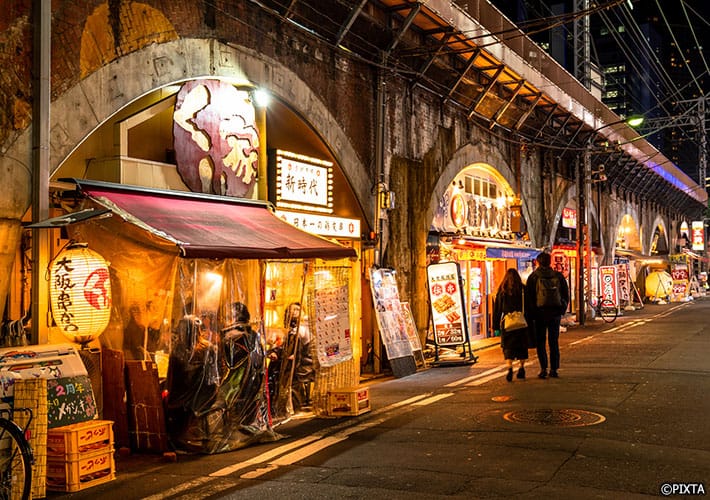
Shimbashi’s eateries and pubs under the train tracks.
Izakayas: Shimbashi is particularly known for its vibrant izakaya scene, with a high concentration of these traditional Japanese gastropubs lining the streets.
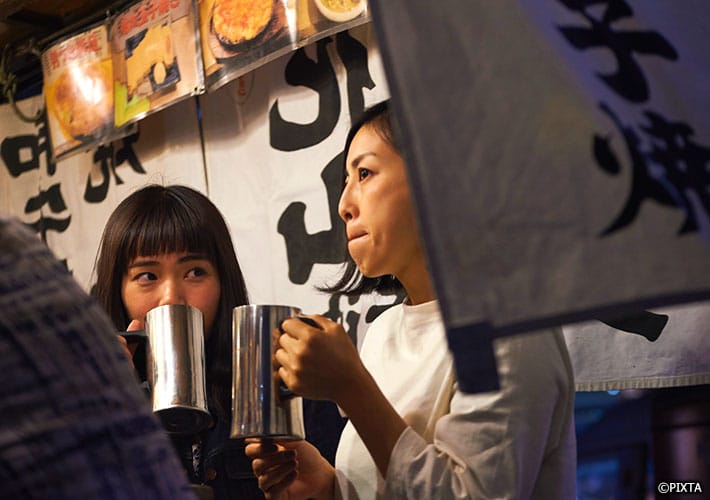
Enjoying a few drinks at a simple gastropub. [Photo for illustrative purposes only]
Shopping
Ginza
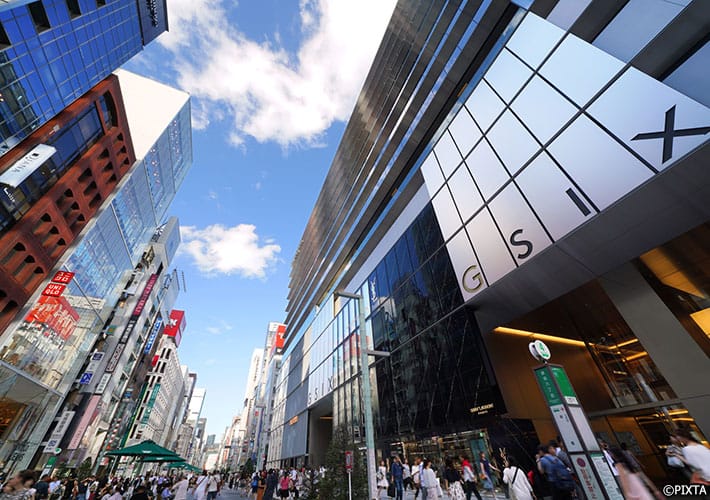
A Ginza avenue flanked by shops and the Ginza Six commercial complex.
Luxury brands: Ginza is home to some of the world’s most luxurious and high-end boutiques, with international and domestic designer labels lining the streets. The district’s department stores are also a must-visit for luxury shoppers, with Mitsukoshi established in 1627 and Matsuya established in 1927, offering a wide range of luxury brands and exceptional customer service. In addition, Ginza Six, established in 2017, is a shopping complex that houses an array of luxury brands, contemporary art installations, and fine dining options. It also boasts a rooftop garden where visitors can unwind after a long day of shopping.

Enjoying a day of shopping. [Photo for illustrative purposes only]
Stationery stores: Ginza is also home to an array of stationery stores, both traditional and modern. You’ll find Japanese washi paper in various colors, textures, and patterns, unique greeting cards, letter sets, notebooks, and accessories for Japanese calligraphy.
Sightseeing and Activities
Ginza
Traditional Japanese Theater: The iconic Kabukiza Theatre, with its stunning architecture, offers captivating kabuki performances year-round and accessible English audio guides, providing an unforgettable cultural experience for international visitors. The Kanze Noh Theater, located within Ginza Six, showcases the elegant and refined art of Noh. Although English translations may not be available, you’ll appreciate the beauty and intricacies of this ancient art form.
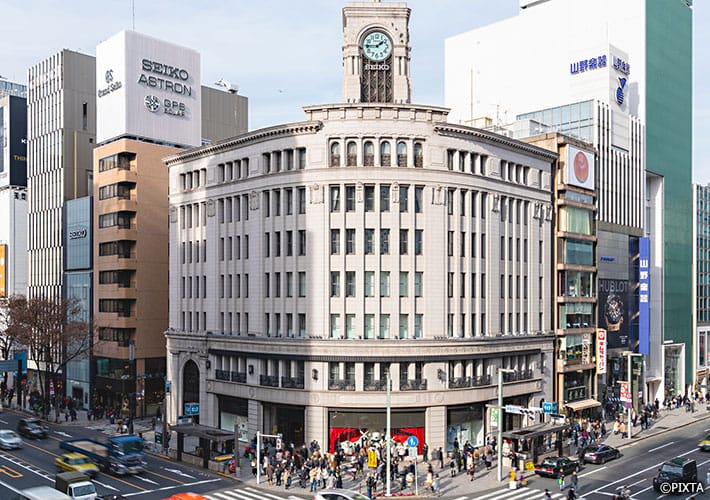
The Seiko House Building is an iconic Ginza landmark.
Architecture: Admire Ginza’s architectural marvels, such as the Seiko House Building with its famous clock tower and eye-catching street-level window display for the Wako department store or Ginza Place with its distinctive latticed facade inspired by traditional Japanese sukashibori openwork.
Shimbashi
SL Square: The iconic meeting spot in the area is the steam locomotive at SL Square, located outside Shimbashi Station. Created in 1972 to celebrate the 100th anniversary of Japan’s railway transport system, SL Square commemorates the district’s role as the starting point of the railway between Tokyo and Yokohama.
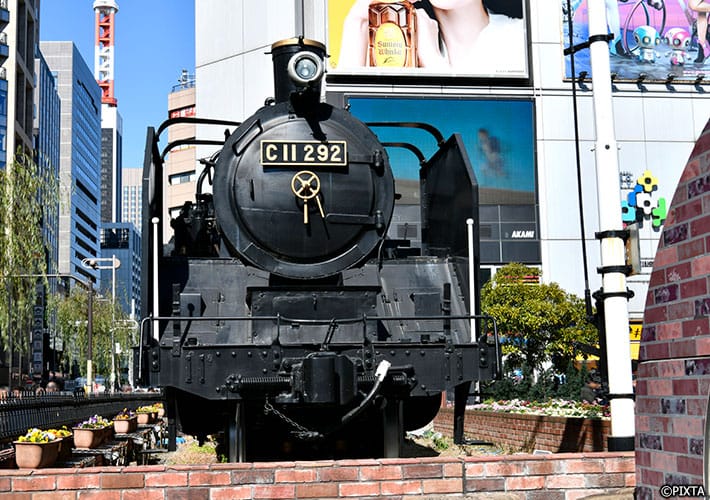
C11-292 steam locomotive at Shimbashi Station is a famous meeting spot.
Karaoke: Sing your heart out at one of Shimbashi’s many karaoke establishments, where you can enjoy a private room and an extensive song selection, accompanied by food and drinks.
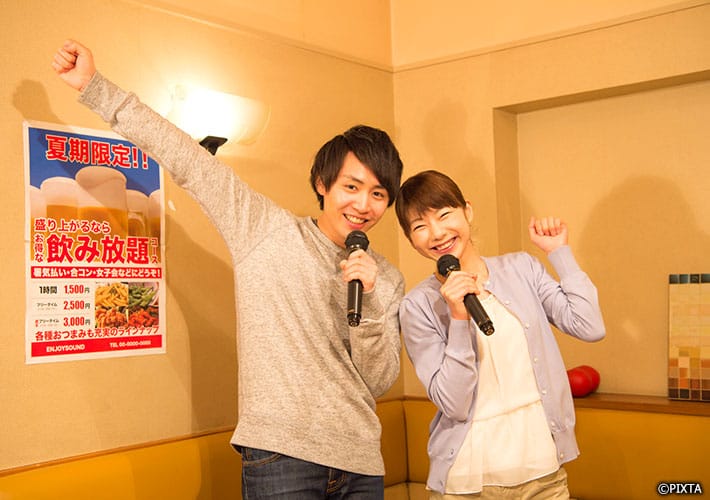
If you love karaoke, you’re in luck in Shimbashi. [Photo for illustrative purposes only]
A well-rounded itinerary for travelers is to start at Ginza for shopping, sightseeing and activities before transitioning to Shimbashi in the evening for a taste of the area’s vibrant nightlife and izakaya scene. This itinerary provides the opportunity to explore the contrasting yet complementary facets of Tokyo’s culture in a single day. Exploring the unique and contrasting neighborhoods of Ginza and Shimbashi is a great way to experience Tokyo’s dynamic energy and diverse cultural offerings.

